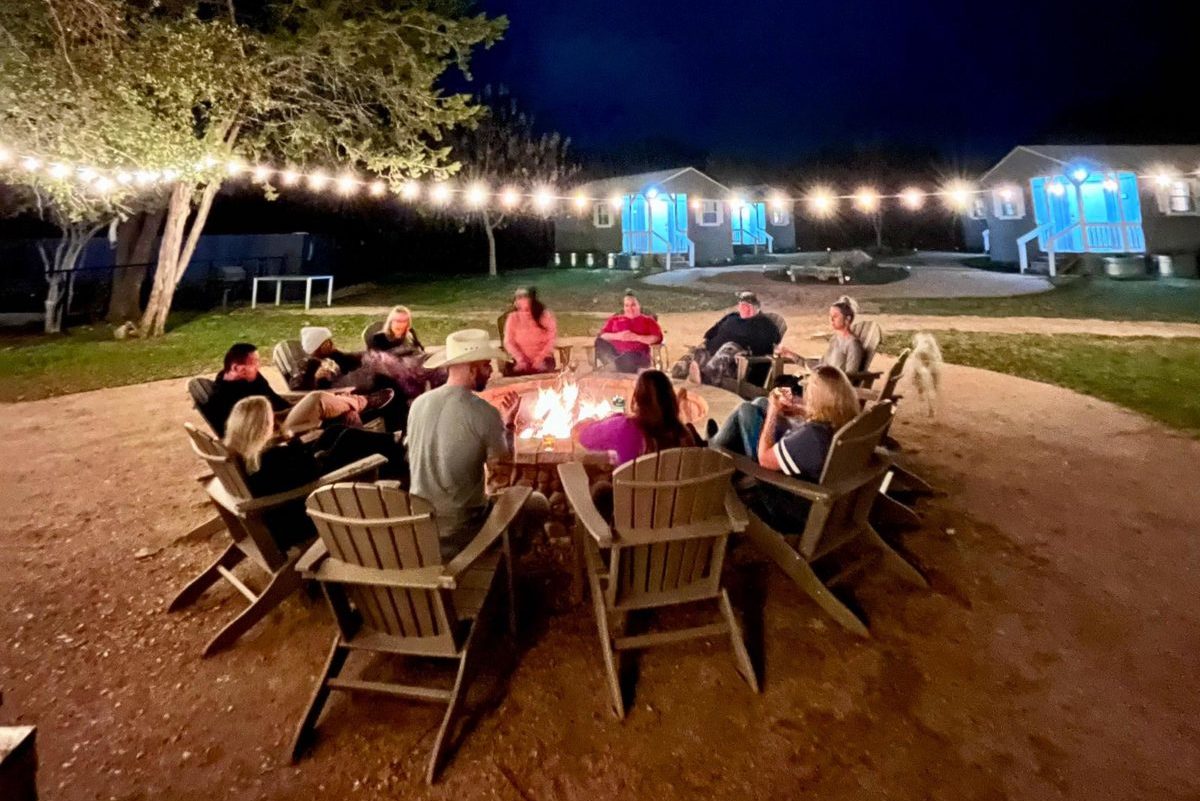Skift Take
As people look for new reasons to attend events, some stand out by focusing more on the flow and less on the logistics.
More than ever, attendees need a compelling reason to leave the house. Barefoot Business offered a unique meeting concept designed for intention, a community-driven, potluck-style, content-free conference.
“It’s about designing for intention, not attention. When you design for attention, you book celebrity speakers and the like, [here] sessions are expected to be the audience driver. Designing for intention is getting people what they need with a focus on being meaningful. Knowing that you will leave with connections that transcend business is a much more valuable reason to participate,” said Liz Lathan, co-founder of The Community Factory.
“Use your gatherings to help community members connect with each other and with you,” explains Lathan who planned the event with business partner Nicole Osibodu, also co-founder of The Community Factory.
For Barefoot Business the group took over a little ranch in Crawford, Texas, just outside Waco. “It was a real strategic business decision not to be in a boardroom. A casual spot that isn’t stuffy is better for mental health and creativity,” said Lathan.
It was a potluck-style event with a blank slate and each attendee contributed. Some pitched in by cooking dinner, another brought in a masseuse, and all shared their expertise.
“Life-altering” is how Lathan describes it.
The original goal was to gather experience economy professionals, although, in the end, a few from outside the industry joined the group. This ultimately added diversity to the group as the outsiders Lathan offered different perspectives. For example, a performance psychologist led an emotional session on overcoming imposter syndrome and a tax strategist enlightened everyone with little-known tips and tricks to keep more income.
Fitting for the location, the opening dinner was not typical. Lathan covered a large table with foil and lined it with heaping piles of nacho ingredients. “There’s nothing like breaking chips together,” Lathan said with a laugh.
Roadmap to Flexibility
Although the agenda was completely flexible, the team planned four conversations ahead of time focused on collaboration, wellness, inclusive design, and tax strategies.
“We realized how important it is to create these moments that could be systemized but not duplicated,” she said. From that thought came the idea of creating a community called “ichi-go ichi-e.” A four-character idiom, ichi-go ichie-e, describes the concept of treasuring the unrepeatable nature of a moment.
More on this new community will be released in January. Intended to be a portal to the diverse communities in the industry, ichi-go ichie-e will include both live and virtual events, a podcast, and a sounding board.
Business That is Personal is the Best
A business trip to Naladhu Private Island in the Maldives in 2021 inspired Barefoot Business. “We were barefoot in the sand when we came up with the idea,” Lathan said. “Through a series of events we did with the team there, we connected so deeply that we felt it wasn’t just business anymore. Instead, we all formed a friendship that transcended business. Our aha moment was realizing that’s how it should always be, but for some reason, corporate events don’t foster that level of relationship building.”
Barefoot Business had no registration fees. Attendees only had to pay for their rooms. “Because of the potluck nature of the gathering, there was no need to monetize every moment,” said Lathan.
A Legacy of Pushing the Envelope
This wasn’t the first time Lathan planned a mysterious event. She helped plan the Secret Family Reunion, where 80 experiential marketers met at the TWA Hotel at John F. Kennedy International Airport, packed for six days with their passports in hand. In a big reveal, the group learned they were going to Tuscany. Think tanks, truffle hunts, pasta-making lessons, photo shoots in the mud, and a glow-in-the-dark rave held on the plane were some of the highlights.
“Three years later, those participants are still in an active WhatsApp group together and have reported that more than $20 million of business has organically happened between them. Proof that business is profitable when it’s personal,” said Lathan.
The founders of The Community Factory collaborated with creative agency Haute to pinpoint the five emotions that drive business: hope, adventure, activity, acceptance, and motivation. Ironically, the emotions uncovered are the same ones that drive happiness.
“The industry doesn’t need to create secret trips or events with no plans. It can rise up and be more creative and evoke these five emotions. Everyone will win. We just happen to love secret trips and events with no plans,” said Lathan.





